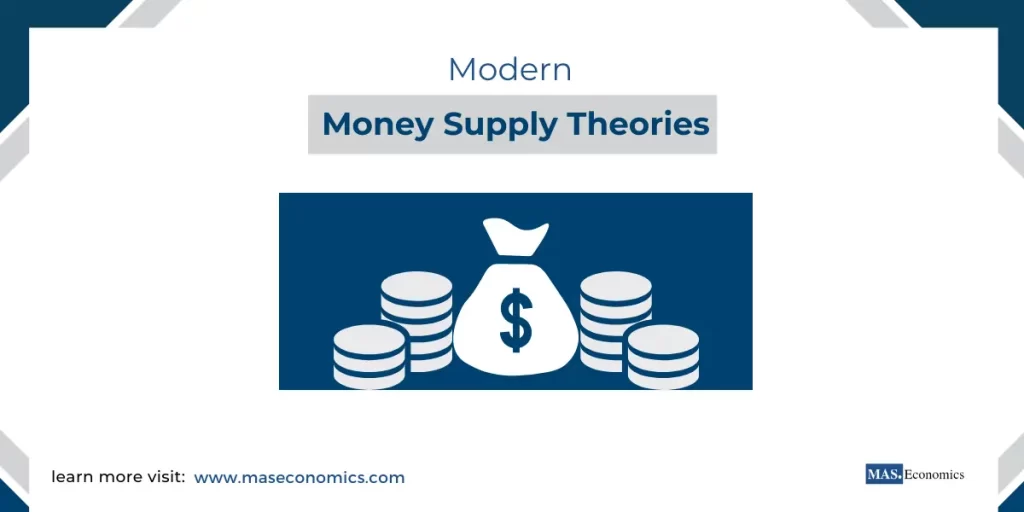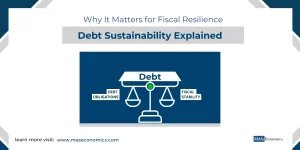The study of money and its supply has evolved considerably since Milton Friedman’s monumental contributions. While Friedman’s Quantity Theory of Money reshaped our understanding of monetary economics, contemporary economists have expanded, critiqued, and refined these ideas. Today, we’re going to explore these modern perspectives, focusing on the contributions of notable economists such as William Baumol, James Tobin, and others. We’ll examine how their theories advanced the conversation about money supply and its role in economic stability, while also looking into the modern implications for policymakers and economic forecasters.
The Evolving Understanding of Money Supply
Money supply is a central concept in macroeconomics. It plays a crucial role in determining inflation, influencing aggregate demand, and shaping overall economic growth. However, the theory and practice of managing the money supply have undergone significant evolution since Friedman’s early contributions. The advent of financial innovations, the growing importance of financial markets, and the increasing complexity of economic interactions have all necessitated more nuanced approaches to understanding money and its supply.
To get a grasp of the modern perspectives on money supply, let’s first recap Friedman’s Quantity Theory of Money.
Friedman’s Quantity Theory of Money: A Brief Recap
Milton Friedman redefined the Quantity Theory of Money by focusing on the demand for money, not merely its supply. He believed that the amount of money demanded is a function of people’s wealth, preferences, and the expected rates of return on different assets. According to Friedman, if the central bank increases the money supply, the excess money in the hands of the public would eventually be spent, thereby increasing aggregate demand, production, and eventually the price level.
Friedman expressed this in the following equation:
In this equation, \( M\) represents the money supply—the total amount of money circulating in the economy. \( V\) stands for the velocity of money, which captures how often money is exchanged for goods and services within a specific period. \( P\) is the price level, reflecting the average price of goods and services in the economy. Finally, \( Y\) represents real output or the total quantity of goods and services produced, which can also be seen as real GDP. Essentially, the equation tells us that changes in the money supply, if not matched by changes in output, would directly influence the price level, leading to inflation.
Friedman’s theory laid the foundation for monetarism, emphasizing the control of the money supply to stabilize the economy. However, economists like William Baumol and James Tobin added depth to this understanding by exploring the practical implications of holding and managing money.
Baumol’s Inventory Theoretical Approach
William Baumol introduced the Inventory Theoretical Approach, which deals with the transaction demand for money. Baumol’s perspective was inspired by inventory management in business. Essentially, he compared how firms manage their inventory with how individuals manage their cash. The core question Baumol addressed was: How much cash should people hold given the trade-off between holding money and investing it?
Baumol argued that holding large amounts of cash can be costly because the opportunity cost of holding cash is the interest that could have been earned if that cash was invested in bonds or other assets. To balance this, individuals and firms hold optimal amounts of cash while investing the rest in interest-bearing assets.
To illustrate Baumol’s approach mathematically, he formulated an equation for the total cost of holding money:
In this formula, \( C\) represents the total cost of holding money. \( Y\) is the periodic income, the amount of money a person or a firm receives within a specific timeframe. \( K\) represents the number of withdrawals made throughout the year. \( r\) is the interest rate, representing the opportunity cost of holding money instead of investing it, and \( b\) is the brokerage or transaction cost of converting assets into cash.
This model suggests that people will hold just enough cash to balance these costs effectively. When interest rates are high, people will want to hold less cash to minimize the lost opportunity of earning interest—preferring to keep more of their wealth in interest-bearing investments. Baumol’s theory introduced an important dimension of flexibility in the otherwise fixed concept of transaction demand that was proposed by Keynes.
Tobin’s Portfolio Selection Model
James Tobin expanded the discussion by developing the Portfolio Selection Model, also known as the Risk Aversion Theory of Liquidity Preference. Tobin questioned a key element of the Keynesian Theory of Liquidity Preference, which suggested that individuals held either money or bonds depending on interest rate expectations. Instead, Tobin argued that people balance risk and return by holding a diversified portfolio of assets, which includes both cash and interest-bearing bonds.
The essence of Tobin’s model lies in understanding risk aversion. Tobin’s hypothesis was that risk-averse individuals are willing to hold some of their wealth in the form of money, even when bonds yield a higher return, simply because holding all wealth in bonds would expose them to higher risk. The preference for liquidity therefore becomes a means of mitigating risk.
Tobin’s Portfolio Model can be understood using the concept of maximizing returns while managing risk. He used an equation to represent the return on a portfolio:
In this formula, \( R\) represents the return on the portfolio. \( B\) is the portion of wealth invested in bonds, while \( r\) is the fixed rate of return on those bonds. The term \( g\) represents the random element that can lead to fluctuations in bond returns.
In this framework, individuals decide how much of their wealth to allocate to bonds and how much to keep in cash by balancing their desire for higher returns against the potential risk.
Tobin introduced a more realistic framework where individuals hold diversified portfolios to spread risk, unlike earlier theories that implied an all-or-nothing choice. This model has significantly influenced how we think about investment, risk tolerance, and wealth management.
Beyond the Classical Approach
Baumol vs. Friedman
The Baumol model provided a practical alternative to Friedman’s rigid quantity approach. While Friedman emphasized controlling the overall money supply to stabilize the economy, Baumol focused on optimizing the amount of cash individuals hold at any given time to meet their transaction needs. Baumol’s model adds depth to our understanding of the demand for money by recognizing the importance of transaction costs and the opportunity cost of holding cash.
Tobin vs. Keynes
Tobin provided a significant improvement over Keynesian Liquidity Preference by introducing the concept of diversification in managing money and bonds. Tobin’s emphasis on risk aversion explained why people maintain a diversified portfolio and are not simply driven by interest rate expectations. This approach adds nuance to the understanding of money demand by acknowledging that people’s financial decisions involve managing risk as well as return.
The common ground shared by these theories is their emphasis on understanding the motives behind holding money. While Friedman and Baumol centered on the costs associated with holding money, Tobin brought in the element of risk and the role it plays in determining individuals’ decisions about how much money to hold.
The Modern Implications for Money Supply and Economic Stability
The modern perspectives on money supply—building upon the works of Friedman, Baumol, and Tobin—have deeply influenced how we think about monetary policy and economic stability. Their collective contributions have helped policymakers craft more nuanced strategies to manage the money supply and navigate economic fluctuations.
Impact on Monetary Policy
Monetary Targeting
Friedman’s idea of controlling money supply growth has been foundational in creating monetary targeting frameworks for central banks. Today, many central banks use these frameworks to determine growth rates for money supply that align with desired economic outcomes.
Interest Rate Sensitivity
Baumol and Tobin’s emphasis on interest rates helped central banks recognize the critical role that interest rates play in influencing people’s decisions about holding cash versus investing. This understanding led to the development of more sophisticated monetary tools like open market operations, which involve buying or selling government bonds to manage liquidity.
Risk Management
Tobin’s model has had a lasting impact on how central banks assess risk in financial systems. Risk aversion and liquidity preference are considered key factors in financial stability assessments, especially in times of economic uncertainty.
Conclusion
The theories of Friedman, Baumol, and Tobin have collectively expanded the understanding of money supply in modern macroeconomics. Where Friedman focused on controlling the quantity of money, Baumol introduced an appreciation for the costs of holding cash, and Tobin added a layer of complexity by explaining how people balance risk with potential returns.
In today’s world, managing the money supply is not just about controlling how much money is in circulation; it’s also about understanding how individuals make decisions about holding or investing that money. Policymakers must consider interest rates, transaction costs, risk tolerance, and more.
FAQs
What are the key contributions of Milton Friedman to monetary theory?
Milton Friedman emphasized the Quantity Theory of Money, which suggests that the money supply directly influences the price level and aggregate demand. He argued that managing the growth of the money supply is critical to stabilizing economies and controlling inflation. His monetarist approach laid the foundation for central banks’ focus on monetary targeting.
How does Baumol’s Inventory Theoretical Approach differ from Friedman’s theory?
While Friedman emphasized controlling the total money supply to stabilize the economy, William Baumol focused on the optimal amount of cash individuals and businesses hold for transactions. Baumol’s theory introduces the trade-off between holding cash and investing it in interest-bearing assets, showing how individuals balance the opportunity cost of holding cash with transaction needs.
What is the significance of Tobin’s Portfolio Selection Model?
James Tobin’s Portfolio Selection Model expands on Keynesian liquidity preference by introducing risk aversion as a critical factor in money demand. Tobin argued that people hold both money and bonds to balance risk and return, not solely based on interest rates. His model explains why individuals maintain diversified portfolios rather than making all-or-nothing decisions.
How does the concept of interest rate sensitivity influence money demand?
Both Baumol and Tobin highlighted the importance of interest rates in money demand. When interest rates are high, individuals and businesses prefer to hold less cash and invest more in bonds or other assets. Conversely, lower interest rates reduce the opportunity cost of holding cash, increasing liquidity preference.
What are the differences between the Keynesian and Tobin approaches to liquidity preference?
Keynesian theory suggests that individuals hold money or bonds based primarily on expected interest rate movements. In contrast, Tobin introduced the idea that people maintain diversified portfolios to manage risk, holding a mix of cash and interest-bearing assets to mitigate uncertainties in financial markets.
How do Baumol and Tobin’s theories add flexibility to the understanding of money demand?
Baumol introduced the role of transaction costs and opportunity costs in holding cash, while Tobin focused on risk management through diversified portfolios. Both theories emphasize that the demand for money is not static; it changes with factors like interest rates, transaction costs, and individual risk tolerance.
What modern implications do these theories have for monetary policy?
Friedman’s theory influenced monetary targeting, helping central banks set money supply growth targets. Baumol and Tobin’s insights into interest rate sensitivity and risk management contributed to the development of more sophisticated monetary tools, such as open market operations, which central banks use to manage liquidity and stabilize financial systems.
How do these theories address the complexities of financial markets today?
Baumol and Tobin’s models offer a nuanced understanding of financial behavior, recognizing that decisions about money holdings depend on costs, risks, and market expectations. These insights are particularly relevant in complex modern economies, where financial markets play a significant role in economic stability.
Why is understanding the demand for money crucial for policymakers?
The demand for money influences economic activity, inflation, and financial stability. Policymakers must understand how individuals and businesses decide to hold or invest money to design effective monetary policies. Managing interest rates, liquidity, and the money supply helps central banks guide economic growth and maintain stability.
What is the relevance of these theories in times of economic uncertainty?
During periods of uncertainty or financial crises, Tobin’s focus on risk aversion helps explain why people hold more cash and reduce risky investments. Baumol’s theory highlights how rising transaction costs impact liquidity management. These insights are essential for policymakers to implement appropriate strategies, such as interest rate adjustments or liquidity injections, to restore confidence and stability.
Thanks for reading! Share this with friends and spread the knowledge if you found it helpful.
Happy learning with MASEconomics




